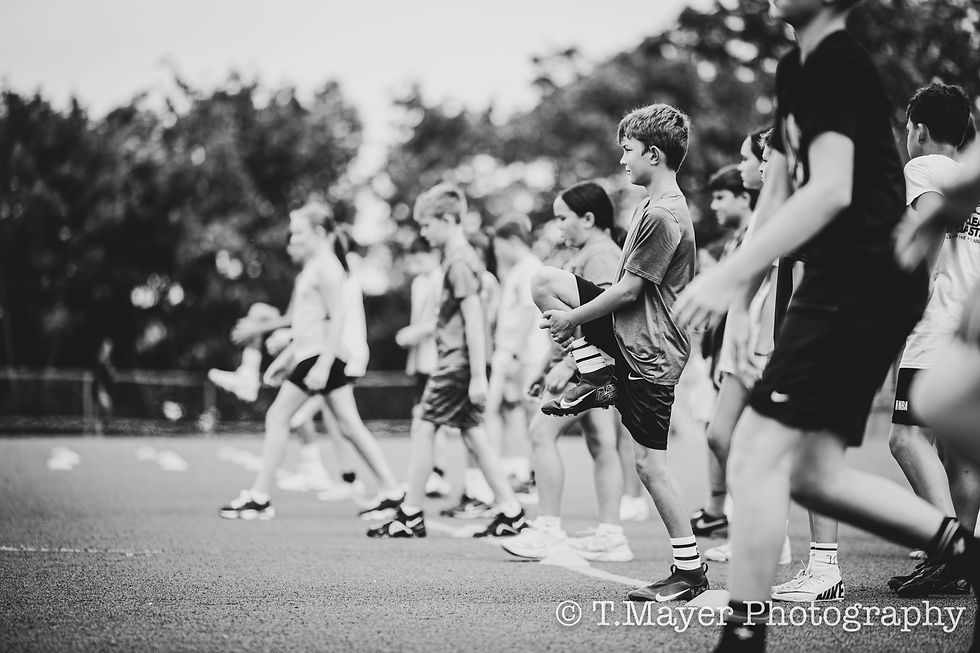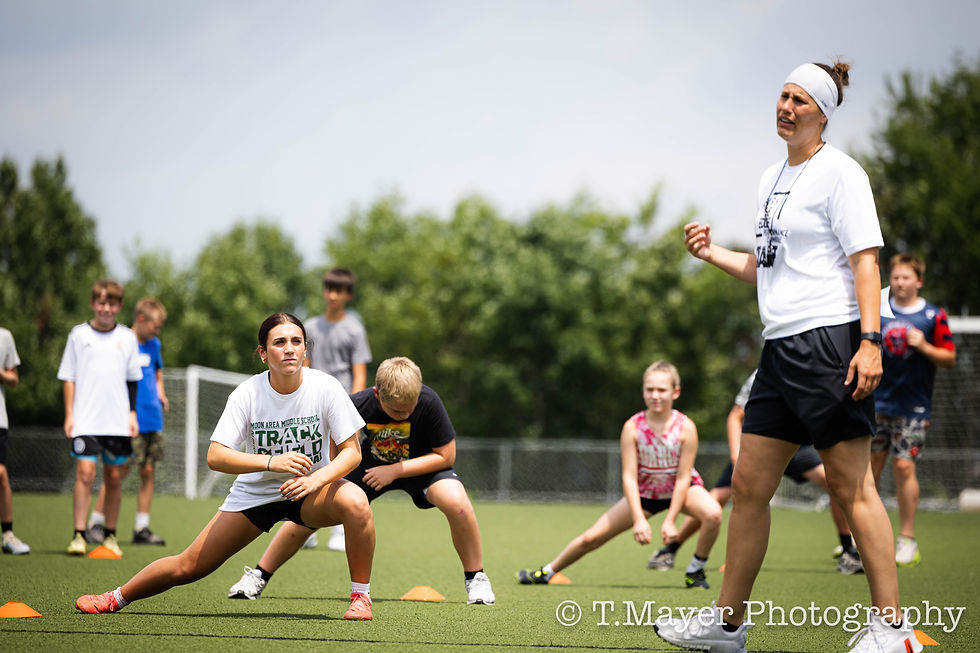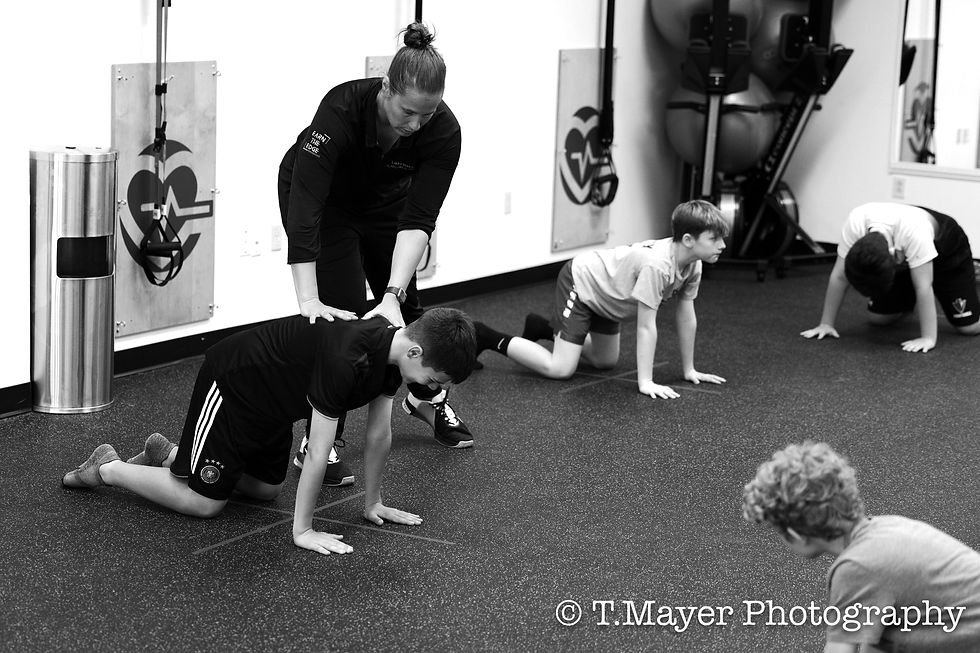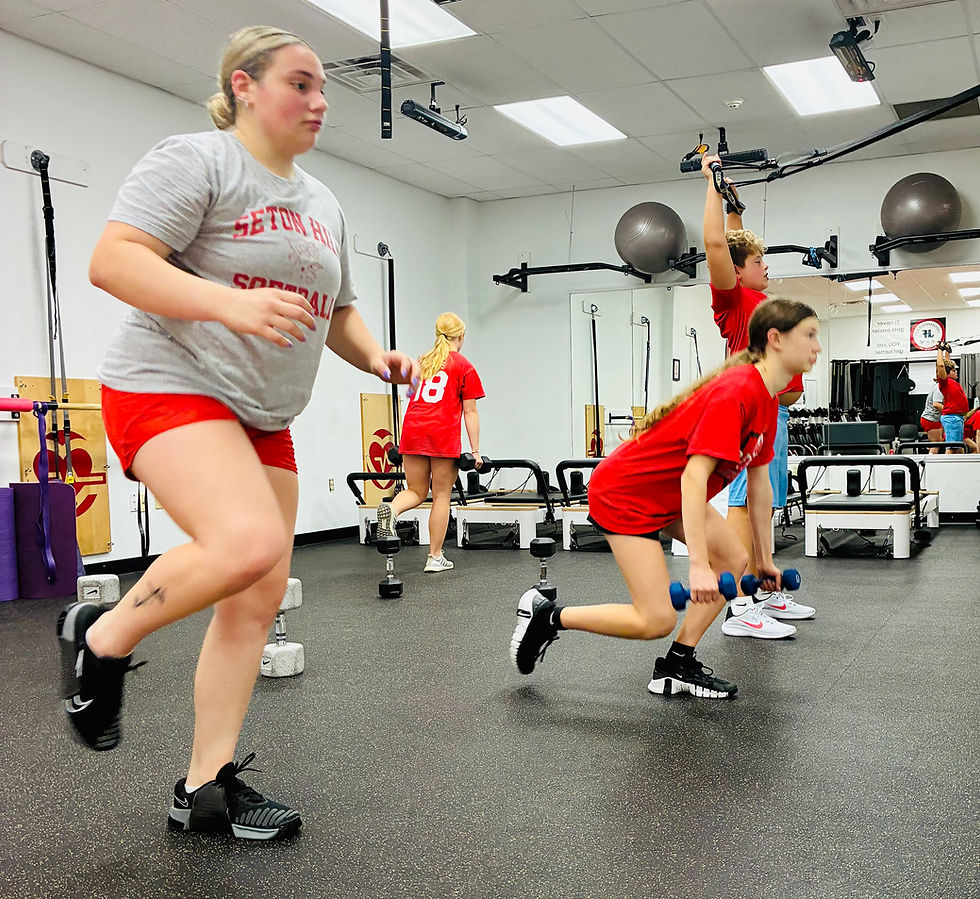Injury Prevention and Performance in Young Athletes: Why the Right Training Matters
- Laura Baden
- 19 hours ago
- 4 min read

Youth sports are one of the best investments in a child’s future teaching discipline, teamwork, and resilience. But as competition ramps up earlier and seasons stretch longer, one concerning trend keeps climbing: injuries.
According to the CDC, sports injuries send nearly 2.6 million kids to the ER each year (CDC, 2023). Even more troubling, many of these injuries aren’t the result of “freak accidents," they’re preventable.
At Earn the Edge Performance, our mission is clear: help athletes unlock their full potential by training smarter, not harder so they can compete with confidence and longevity.
Why Growing Athletes Are Unique
Here’s the mistake many programs make: treating young athletes like mini-adults.

The truth is, youth athletes are still developing in critical ways:
Growth plates (the soft tissue at the ends of bones) remain vulnerable until late adolescence. Injuries here can affect growth and alignment.
Muscle strength and coordination lag behind rapid bone growth during puberty, creating what some call the “adolescent awkwardness” phase.
Hormonal changes impact recovery, flexibility, and even joint stability.
➡️ Translation: Athletes need age-appropriate training that matches their physical and neurological development. Skipping this step doesn’t just hurt performance, it sets the stage for injuries.
Common Preventable Injuries in Youth Sports
ACL Tears – Especially common in female athletes ages 12–18 due to anatomical and hormonal factors. Research shows that most ACL tears happen during landing and cutting, not contact (Griffin et al., J Am Acad Orthop Surg, 2000).
Overuse Injuries – Stress fractures, tendonitis, and “Little League shoulder/elbow” often stem from repetitive movements without adequate strength or recovery.
Patellofemoral Pain Syndrome (PFPS) – Knee pain linked to poor hip/core strength and faulty movement patterns.
Ankle Sprains – Often the first sign that balance, mobility, or landing mechanics are being overlooked.
Parents often think injuries are just “part of the game.” But studies show otherwise: neuromuscular and strength training can cut sports injuries nearly in half (Lauersen et al., Br J Sports Med, 2014).
The Science of Injury Prevention
Strong athletes are resilient athletes. But “strength” isn’t just about lifting heavy it’s about building a balanced system that can handle forces safely.

🔹 Strength First – Foundational exercises (squats, lunges, hip bridges, planks) build stability in the hips and core, the key to protecting knees and lower back.
🔹 Movement Quality Over Quantity – Teaching athletes how to hinge, squat, jump, and land correctly as well as monitoring and improving joint mobility prevents faulty patterns from becoming habits.
🔹 Deceleration Training – Controlled landings, stick drills, and single-leg stability work reduce ACL and ankle injuries.
🔹 Progressive Plyometrics – Explosive jumps only come after athletes demonstrate strength and control. Skipping steps = injuries.
🔹 Rest & Recovery – Growth and repair happen outside of training. Research shows athletes who play more than 8 months/year in one sport have significantly higher overuse injury risk (Jayanthi et al., Am J Sports Med, 2015).
What Happens If You Skip the Right Training

Short-Term: performance below potential, nagging injuries, missed practices, reduced playing time.
Long-Term: performance below potential, chronic pain, early specialization burnout, and in severe cases, injuries that affect mobility and health into adulthood.
Mentally: athletes sidelined by injuries often experience frustration, anxiety, or depression from being pulled away from their sport and peers.
It’s not about fear—it’s about awareness. Parents who understand this can make smarter decisions about their athlete’s training.
Why Earn the Edge Is Different
Many programs focus on the flash: maximum bench press/squats and gimmicky plyos they found on social media that look cool but don't translate. At Earn the Edge Performance, we focus on the foundation:

Evidence-Based Programs: Every exercise is rooted in current sports medicine and performance research. We don’t guess, we use proven methods.
Individualized Screening: Every athlete starts with a movement assessment to spot red flags early (like knee valgus, hip weakness, or asymmetries) and to identify strengths to maximize, weaknesses to improve, and individual goals to reach.
Progression That Matches Growth: We don’t throw 12-year-olds that cant control a body weight squat or lunge into Olympic lifting programs. Athletes progress from body control → strength → explosiveness.
Mind + Body Approach: Physical resilience means little without mental resilience. Our Elite Mindset Training Workbook builds focus, confidence, and builds skills such as conflict resolution, leadership, team building, time and stress management.
Expertise in Female Athletes: With ACL injuries disproportionately affecting female athletes, our programs are designed to address their unique needs, an area often
overlooked.
The result? Athletes who not only perform better now but have the strength, confidence, and habits to keep playing and thriving for years to come.

Takeaway for Parents
Youth sports should add to a child’s life, not take away from it. The right training protects against injuries, builds confidence, and helps athletes enjoy their sport longer and at a higher level.
At Earn the Edge Performance, we’re here to make sure your athlete gets stronger, safer, and more confident, without sacrificing their health for short-term gains.
✅ Ready to help your athlete stay injury-free and performing their best?
Book a FREE Athlete Rating with us today.
Grab our 12-Week Elite Mindset Training Workbook to give your athlete tools to thrive under pressure.



Comments